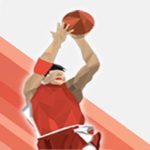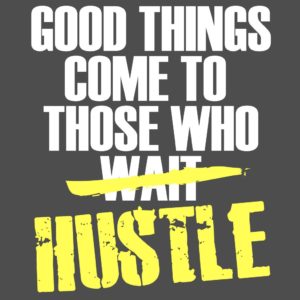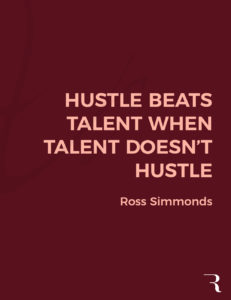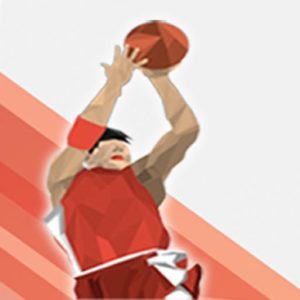Court Awareness, sometimes called “situational awareness”, is a critical skill if you want to be a top player on a highly successful team in almost any sport. In simplest terms, it is being aware of what is going on around you. At the next level, you are aware of what each observation means and what might happen next.
It can also be a very helpful skill in other areas of life. In fact, some of the exercises that will be presented below, are based on articles from military blogs explaining how awareness can be applied in battle and other situations.
Basketball Court Awareness…
Learning from the Master
The short video below shows how one of the best passers of all time uses a highly developed court awareness to make some amazing passes. There are some passes where he is looking at the recipient of his pass but there are many more where he is either looking away or anticipates where his team mate will be to accept his pass (and usually score).
What does Court Awareness mean for basketball players?
Court Awareness, at its peak, means that you are aware of all the players on the court… where they are, where they are moving, who has the ball, where they are looking and even what they might be saying. It extends to knowing the current score as well as how much time is on the clock as well. If your state has a shot clock, court awareness includes knowing how much time is left whether you are on offense or defense.
Seems like a lot of information to process all at once, doesn’t it? The good news is that your court awareness can be developed over time… if you put in the effort to improve.
How to improve court awareness
The K.I.M. game, also known as Keep In Memory, is an effective and enjoyable method to boost your court awareness skills. The fundamental concept behind this game is to improve the player’s ability to recall a dynamic scene accurately, a trait crucial in understanding the constantly changing dynamics on a basketball court.
In this game, you’re encouraged to take a mental ‘snapshot’ of the current game state – player positions, who has the ball, the clock, and the score. Then, as the game progresses, you must frequently refer back to these mental snapshots, updating them constantly. This mimics the real-time process in an actual game, as you strive to keep an updated mental image of the court situation while simultaneously involved in the game.
Interestingly, some relate this game to ‘Kim’s game’ from an old movie, where the protagonist develops a strong memory by recalling intricate details from a scene. Regardless of its origin, the K.I.M. game is a beneficial tool in training the brain to capture, store, and retrieve necessary details swiftly, significantly benefiting the player’s court awareness and overall game performance.
Either way, KIM is a way to improve your ability to take a “mental snapshot” and then access it at a later time. In basketball, this “snapshot” is constantly changing (e.g. locations of players) but since you can’t always see 100% of the court or all the players, having a picture in your mind that you can refer to is of immense value as you are figuring out what you should do next.
Here are some examples of KIM games that you might want to try…
KIM Game # 1 – Team Challenge
[FREEZE] Stop play and have all players close their eyes. Ask questions of each player to identify locations of other players on their team as well as the opposition. Team with most answers correct wins.
You can also take pictures from behind the defense at different points in a scrimmage and, later, use them as a challenge for your team to predict where every player was after seeing the picture for just a second or two.
KIM Game # 2 – Snapshot. Questions.
Take a mental picture of something. Examples could be a billboard (if you are driving), a bulletin board (in a school) or a scene from a particular perspective. Have each person answer questions based on their brief glimpse or “snapshot” of the scene or item(s).
KIM Game # 3 – What’s Different?
I got this exercise from professional speaker and World Champion of Public Speaking, Craig Valentine. He uses this as part of his speeches to help audience members recognize changes. He starts by asking audience members to pair up and designate one as the “observer” and one as the “changer”.
He then asks the “changer” to think of 6 things they could change. Craig quickly stops the exercise before it goes too far and he lets the audience know that 6 things is probably too much. He gives the changers a different goal… change one thing.
Next the pairs of audience members turn away from each other (back to back) and the “changer” changes 1 thing about their clothing or personal “look”, e.g. hair style, location of watch or other items.
After instructing the pairs to turn back toward each other, Craig asks the question, “What’s missing or changed?”. Most observers can pick out the one change. He then repeats the exercise with two changes … and again the observer usually recognizes the changes.
What’s the moral of this story?

If you start small, you can learn to observe the changes and your ability to see relative changes can be expanded with practice.
The same thing applies to Court Awareness. By using these exercises along with ideas you develop yourself, players will train their brains to be more aware of the location of other players, where they are moving as well as other factors that are part of the game.
What’s next?
First, it would be great if you could post your ideas or feedback about Court Awareness in the comments below. We would also love to hear what types of drills you use and how court awareness has improved the performance of your team.
Second, you might want to learn more about how court awareness figures into something called the “OODA Loop”. Check out this article by Coach Wheeler “Mental Models and the OODA Loop.”


 Don’t use the Talent Mirage as an excuse for not putting in the effort to develop the skills that will allow you to compete at the highest levels. Don’t worry if you can’t see or even imagine all the skills you will need to become successful. Start where you are and keep working hard to improve… step by step. Someday someone will say “You are so Talented.” When that happens, just smile and say “Thank You”… knowing that you put in the effort over time to get where you are. Remember… Talent is a Mirage.
Don’t use the Talent Mirage as an excuse for not putting in the effort to develop the skills that will allow you to compete at the highest levels. Don’t worry if you can’t see or even imagine all the skills you will need to become successful. Start where you are and keep working hard to improve… step by step. Someday someone will say “You are so Talented.” When that happens, just smile and say “Thank You”… knowing that you put in the effort over time to get where you are. Remember… Talent is a Mirage. At the
At the  Why does Hustle matter?
Why does Hustle matter? Want to improve your chances of making the team?
Want to improve your chances of making the team? The one basketball season ends and another basketball year begins. If you are only playing and working on your game during the “official school season” than you are missing out. Below are the 4 sections / timelines that make up the “4 part basketball year” plus the off-season. Let’s start with the day after your school season ends…
The one basketball season ends and another basketball year begins. If you are only playing and working on your game during the “official school season” than you are missing out. Below are the 4 sections / timelines that make up the “4 part basketball year” plus the off-season. Let’s start with the day after your school season ends…